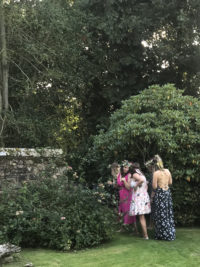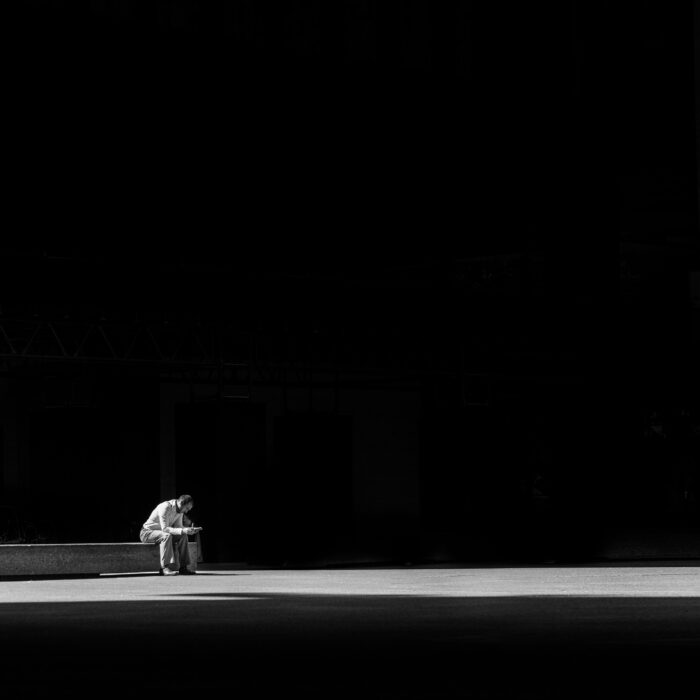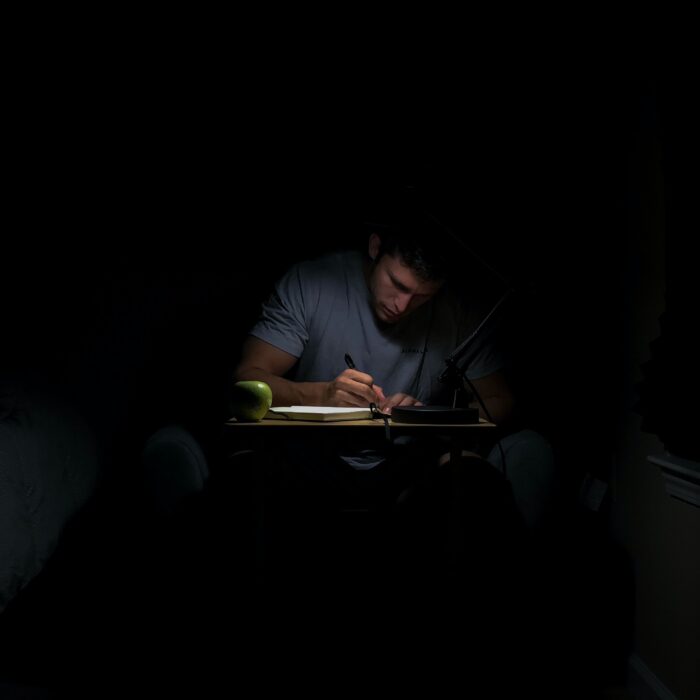You have no items in your cart. Want to get some nice things?
Go shopping
I am travelling north to celebrate my friend. She’s getting married in two month’s time, and twenty-one of us, her women, are gathering in Northumberland to cheer her on in a glittering haze of cake, booze, and flower-crowns. That’s right: I’m going to a Hen Do.
I’m very nervous. Aside from the Bride, her sister, and the Head Bridesmaid, I won’t know anyone at this party, and my capacity for new people is low: my brain is having a Bad Day. Also, I haven’t had a drink in over six weeks (an attempt to ward off the aforementioned Bad Brain Days) and alcohol is famously de rigueur at these things. Although I do intend to imbibe just a tiny bit this weekend, I’m worried that my relative sobriety will mark me out as some kind of unsporting naysayer, only serving to underline the obvious differences between me and everyone else present. I’ve no doubt about it, you see: they – uniformly gorgeous, talented, successful – will see me in my unruly body, my ill-chosen outfit, my underwhelming career, and immediately deduce that I have no place among them.
I tried to get out of going, but my husband wouldn’t hear of it: “You’re going through a rough patch, and its shit, I get it,” he says. “But I really think that if you look back when you’re feeling better you will regret not going. She’s one of your oldest friends; you’ll probably feel a lot better when you get there. It’ll be good! The countryside! Fresh air! Exercise! You can go on a hike!” I grimace at this last suggestion, but he does make a good point: I haven’t seen the Bride, who lives in Scotland, for a while, and it’s true that I would likely regret it if I cancelled now. And there are other aspects of the weekend that I am looking forward to: I’m eager to get out of London; the dinner will be catered (fancy); a yoga teacher is booked for tomorrow morning; the Head Bridesmaid is bringing her Tarot cards.
Tarot is huge now. Why? I’ve heard a few different explanations, the least generous of which argue that, like selfies and social media and the irrepressible preference for avocado-on-toast over saving-for-a-mortgage, our reignited fascination with the spiritual realm is borne out of a characteristically millennial self-obsession; as with the dark-glass screens of our many mobile devices (call to mind Charlie Brooker’s Black Mirror, Jia Tolentino’s Trick Mirror), tarot cards, astrological charts, and healing crystals simply provide a fresh surface to let Generation Narcissist gaze upon their own reflection. This kind of argument has always struck me as preposterously underdeveloped: I’m reminded of the times at school when, periodically, it would surface that someone in our year group had developed an eating disorder, or taken up some other form of self-harm. “She’s just doing it for attention!” the prevailing consensus would wail, and somehow that meant that the scars on her arms weren’t really real, her sadness was a merely a sign of her repulsive self-involvement, and the best thing to do was ignore her. But surely, someone who would deliberately hurt themselves is in desperate need of attention? So if a generation is obsessed with defining and divulging themselves, what is it that they need?
My train was delayed, meaning I missed a connection in Newcastle, and I am late. By the time I arrive at the house it is already dark, and the ground-floor windows are glowing. The warmth of their light should mean welcome and comfort, but instead I feel a sick dread at the sight of the women inside. I briefly consider buying myself some more time, slipping round the corner for a cigarette, but I’m too late – someone has seen me arrive, and is running for the door. I nervously approach the garden path. Luckily, it is the Head Bridesmaid. She envelopes me into a hug and I feel a little better.
The house is undeniably beautiful; old and grand, with tasteful rugs and lovely patterned wallpaper; the sort of place the BBC would film a domestic thriller in which the glamourous matriarch acquires a morally dubious toy-boy. There is a rolltop bath upstairs, and in the kitchen a gorgeous, rustic, wooden table, and an Aga. It’s all very Instagram, but no one will be posting pictures, at least not yet: there is no Wi-Fi, and barely any network coverage. Only one spot in the whole house – a window at the back of the sitting room – seems to pick up signal. Everyone’s phone is there, propped against the pane or stacked on the sill, in hopeful offering to the technological gods. Under flickering fairy lights, their screens’ dark mirrors create the illusion of movement – an iPhone murmuration.
Somehow, I have been assigned the second-best bedroom in the house, which I am sharing with the Head Bridesmaid and the bride’s sister. It is delicious – a big comfy bed, ornamental cushions, an en-suite bathroom, a window seat (my favourite, favourite thing – a window seat to read in!). There are gift bags, too – an organic bath-bomb, some artisan chocolate, a tiny candle shaped like a rose. Suddenly, the loveliness of it all overwhelms me and I start to cry: I don’t deserve this; I shouldn’t be here. I breathe, put on some lipstick, slap my own face, hard, and go downstairs. I put on my best show: quick with a line, outrageous, gregarious. I am secretly sick in the toilet, twice.
Another often-cited explanation for the rise of modern spirituality is an urge to cultivate the illusion of control in a world that feels like it is rapidly spiralling out of it.
I wake up with a horrible hangover: I have a headache and I feel nauseous, but by far the severest of my symptoms is the inevitable anxiety fizzing through my brain and veins. I don’t go to the yoga class, and I feel like the most enormous, pathetic failure in the world. I don’t go for a walk (not a hike! I’m assured, but I still don’t go) with the rest of the girls, because I’m certain that my unfit, oversized body will slow everyone else down, that they will feel embarrassed, frustrated by the incongruity of my presence. Instead, I stay behind at the house, and help the bridesmaids set up for the rest of the day’s activities: afternoon tea in the lounge, followed by flower-crown making in the garden, then dinner. Sorting through great armfuls of foliage, I attempt to conceal the tell-tale tension in my mind and body with a somewhat maniacally delivered monologue on the mood-altering benefits of carnations (people can be awfully snobby about carnations; I think they’re lovely). Everyone returns from the walk, and we begin our tea – tiny triangle sandwiches and gin fizz in coffee-pots – when suddenly, unprompted, the tingling wave of my anxiety finally crashes into despair. I excuse myself early and slip outside.
In the daylight, the garden is breath-taking: the house is perched on a modest hill, and backs onto nothing but vibrant green and trees and a distant river. Birds sing. I want to bury this place in my soul. I take a gentle stroll across the lawn, find a tiny gate that leads into the graveyard of the neighbouring church. I like graveyards; I find them peaceful. I tour the stones, and eventually come to a great, old tree, a yew. It is enormous and ancient, its massive trunk held in place by a complicated mechanism of chains and belts, yet undeniably, irrepressibly, pulsatingly, generously, alive. I am moved to tears.
Inside the church, I learn that the yew is thought to be more than nine hundred years old. There is something about very old things; an energetic wisdom, a grounding energy. I wonder if this might also have something to do with the appeal of Tarot; the safety-net feeling of doing something that has always been done. Only, it turns out that Tarot isn’t all that old, after all: some practitioners will argue that it goes as far back as Ancient Egypt, but there is little evidence of this. Originally used for playing games, the earliest Tarot cards are thought to date from fifteenth-century Italy; they weren’t used for divination purposes until the eighteenth century. I am unsurprised when I learn this: there are so many things, from fairy tales to a Ploughman’s Lunch, that style themselves to appear more ancient and traditional than they actually are. Still, it begs the question: if that feeling of groundedness, of elemental wisdom, can be conjured just as easily by pretend ancientness as real, then where is it really coming from? Is it that we simply project what we want, or need, to see and feel; something that was inside us all along?
The theme of the dinner is “A Midsummer Night’s Dream”. We are all in flowing floral dresses, hair left long, our homemade flower-crowns the perfect accessory. One girl is sporting a pair of shimmering fairy wings. Another, equipped with tiny pots of glitter, moves from person to person, highlighting cheekbones and widening eyes with a sweep of silver-gold. She gently applies the shimmer to my face, as if I am just the same as everybody else, as if I belong here, as if I deserve to be adorned, to gleam. Perhaps I do. We go outside for photos and it is the golden hour, and the light and the mood and my bare feet on the grass feel like magic. I take lots of pictures; I always offer to do this, to avoid being photographed myself. But the Bride wants to capture the whole party together, and has asked that the waiter act as photographer. The rest of the group have already assembled themselves on a small flight of steps, and the natural place for me to insert myself, the space that’s most obviously available, is in the front row, next to the Bride. This feels profoundly wrong: it is not for me to be front and centre. I tentatively attempt to articulate this: “Shouldn’t it be someone else, at the front with you?”
“What are you talking about?!” The Bride laughs, and she pulls me into the fold.
After dinner, I finally sit down with the Head Bridesmaid and her Tarot cards. This is how the ritual goes: a question is asked, the cards are shuffled and laid, past, present, future. Each is different and beautiful, either depicting one of twenty-two archetypes (known as the “Major Arcana” – Strength, Death, Justice, and so on), or else falling into one of four numbered suits – cups, swords, wands, and pentacles. Every card represents something different, and its meaning can change based on the cards that surround it. We have books with us that list the seemingly endless possible interpretations, which we will consult to construct an answer to the original question. Really, the cards are just a framework for thinking – or talking – something through.
When she turns over my final card (representing the future), my friend the Head Bridesmaid smiles: “I am so pleased she turned up for you!” she says.
The High Priestess sits on a throne, serious and still, her gaze fixed directly ahead. Either side of her are two pillars (balance), a gesture to Solomon’s Temple, the first to be built in Jerusalem. They are not the only religious iconography: around her neck, the High Priestess wears a cross (Christianity), in her hands is a scroll reading “Tora” (Judaism), at her feet is a (starless) crescent (Islam). Another image of the moon, this time full (femininity, emotion, reflection, restoration), provides the centrepiece to her crown (power, governance). Behind her hangs a tapestry (boundaries, concealment, the unknown), decorated with pomegranates (fertility, sexuality, the Underworld), and behind that, though we see just a glimpse of it, is a large body of water (the unconscious, emotion, self) – the movement of which is reflected in the flowing folds of her blue-green robes. The High Priestess is mysterious, wise, calm and powerful. She challenges us to look inside ourselves; to discover our own meaning.
More and more of us are joining in; the atmosphere is warm, safe, nurturing. We take it in turns to ask a question and lay the cards, then all chip in with potential interpretations of the various symbols, collectively stitching together a narrative. I realise something: the Tarot may not be ancient, but what we are doing is. Storytelling has always been a domestic (and therefore female) art: in folk and fairy tales, the almost-consistently female teller engages symbol, metaphor, and archetypal characters (just like those used in Tarot) to communicate to her sisters and daughters important, otherwise unspeakable, and oftentimes life-saving information – about sexuality, about motherhood, about male violence. Stories are how women help women, how we show ourselves, and the world, to each other, and how we help each other see ourselves. Tarot is not about divination: it is an interactive fairy tale, in which the story-parts we need are taken and gently rearranged until we are soft and open enough for the healing to take place.
The next morning, I wake up tired, but comforted. I sit in the window-seat in the second-best bedroom with a warm mug, looking out across the fields and feeling sad we need to leave. As I bid farewell to the house, I press my face against the bathroom wallpaper and silently promise that one day my own bathroom will be as lovely as this; in this moment, I believe I deserve a nice bathroom. The Head Bridesmaid drives me to the station in York, and in the car I bawl out my eyes to her, uncovering long-held grievances and insecurities and stories. I cry and cry and cry. She is patient with me, kind, and afterwards I feel cleansed and calm; a weight, lifted.
I am by no means cured of course. My Bad Brain Days are as many as they ever were, and my arsenal of defences is varied, and varies in its success. But I have a new place of retreat now, a space inside myself, beyond my brain. It is peaceful and green, and I am not alone: I see them laughing in the gentle breeze, ivy woven through their wild hair, barefoot. High priestesses, all.

About Faye Keegan
Faye Keegan wrote her PhD on mid-century romance novels and now works as a Personal Bookseller for an independent bookshop in London. Her writing has appeared in Women: A Cultural Review, 2Elizabeths, and The Mayfair Times.



